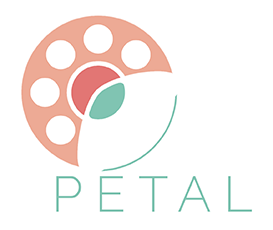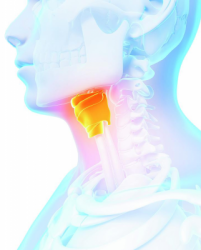

LARYNGECTOMY.NET
Vocal rehabilitation
Oro-oesophageal voice:
– Technique: Swallowing air through the mouth then belch out through the oesophageal mouth, articulate this oral air outlet.
– Advantages: voice of more or less good quality, the hands are free
– Disadvantages: tracheal inspiration noise, injection noise, long, difficult and tiring learning.
(In french) Oro-oesophageal voice step by step: Worksheet n°1, Worksheet n°2, Worksheet n°3
Tracheo-oesophageal voice:
– Technique: It requires the presence of a phonatory implant that the surgeon inserted either at the end of the surgery or at a distance from any additional treatment. Pulmonary expiratory air is directed to the top of the oesophagus when the patient blocks his/her tracheostoma with the finger. The air exhaled generates vibrations in the oesophageal sphincter and produces a sound that will be articulated.
– Advantages: fluid voice, sound of voice louder and more natural, easy and faster to learn.
– Disadvantages: incidents related to the phonatory implant (liquid incontinence, wear of one-way valve hinge), need to obstruct the tracheostoma.
(In french) Tracheo-oesophageal voice step by step: Worksheet
It is often recommended to learn these two voices at the same time.
Laryngophone
– Technique: The sound is produced by the vibration generated by the apparatus which is placed on the skin on the neck.
– Advantages: often the last recourse allowing speech when the other 2 voices have failed.
– Disadvantages: unnatural voice, the hands are not free, large apparatus, impossible to use on an irradiated area.


